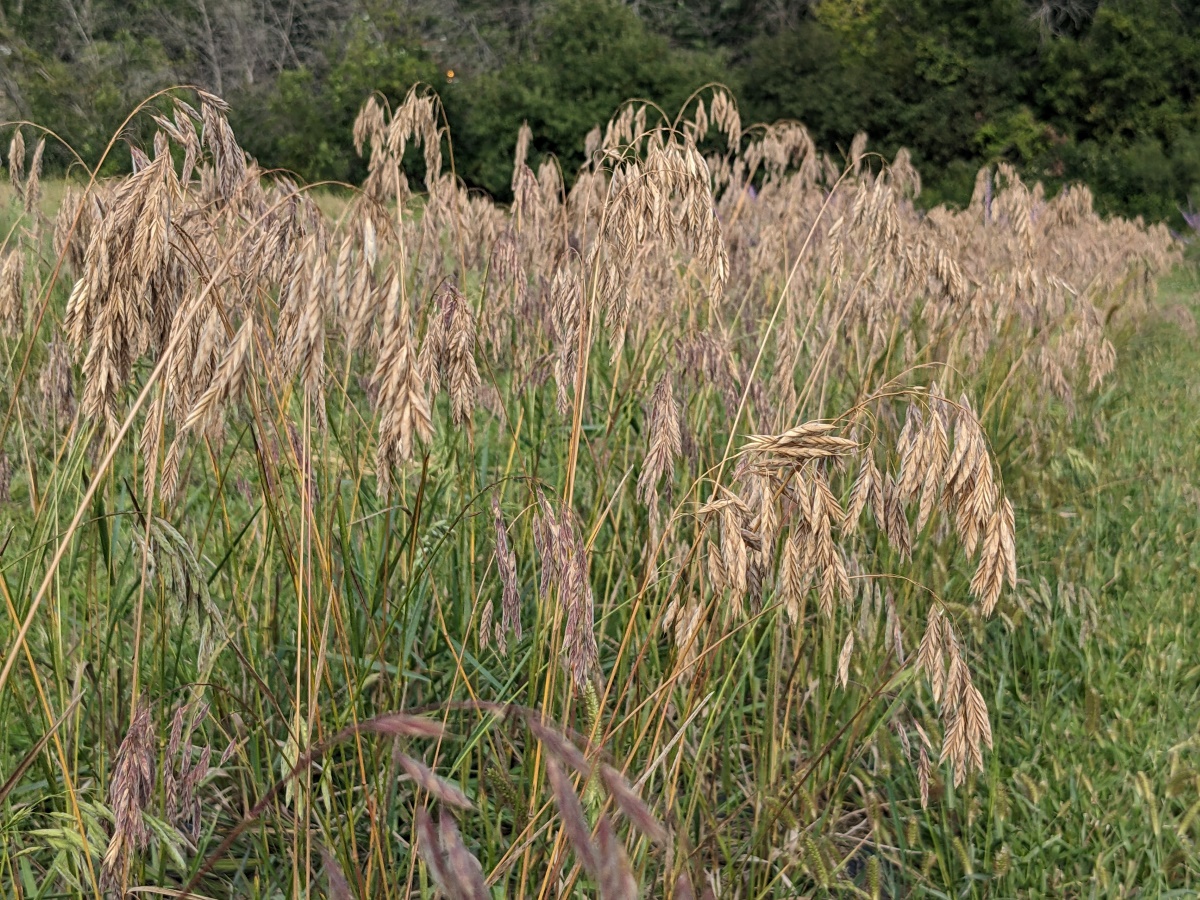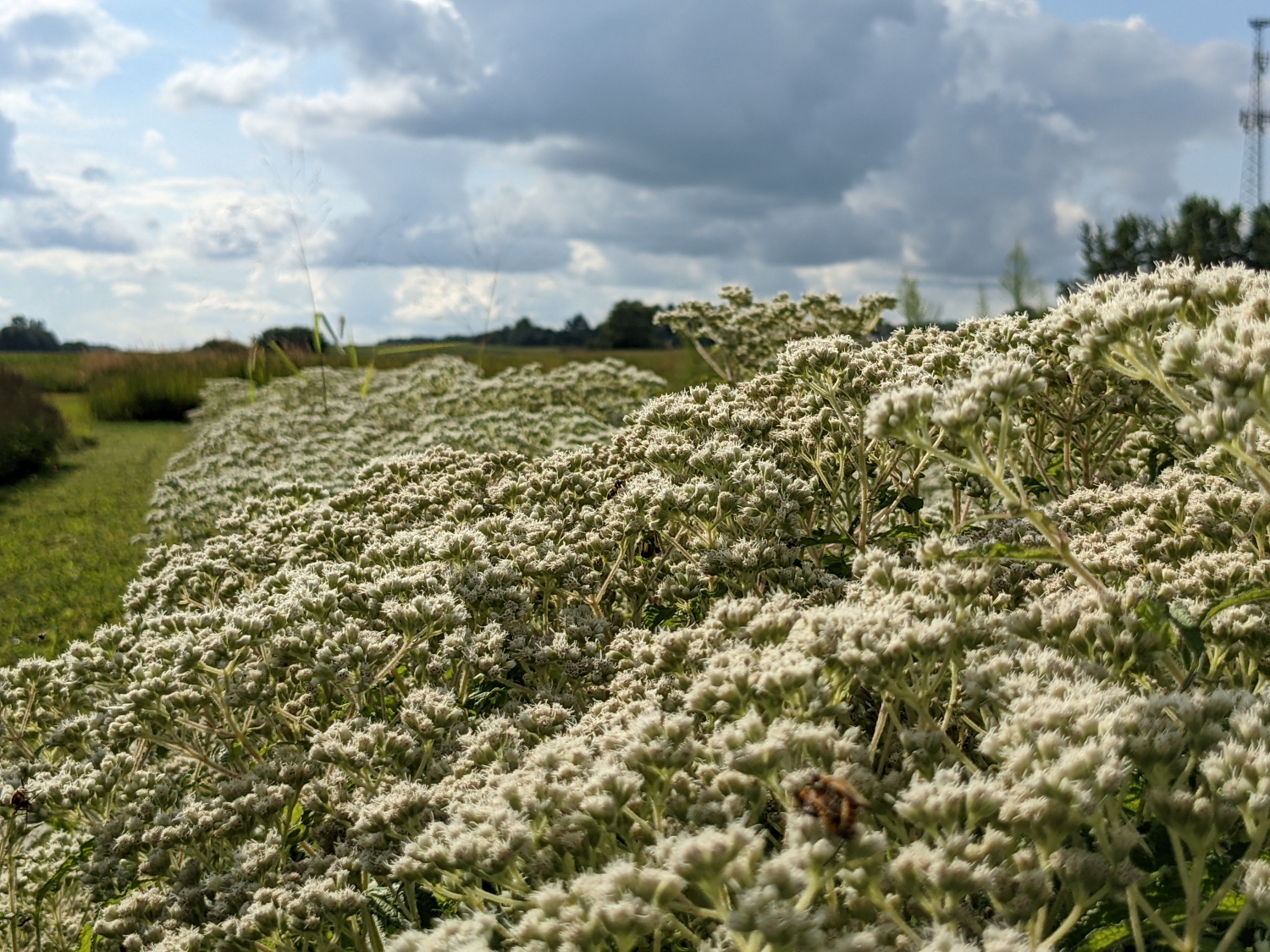Recently Released Species
These species are now available as stock seed for native seed growers in Iowa and neighboring counties of surrounding states. For species collected in 2021 and later, the zone designations have changed. Zone NI refers to collections made in roughly the northern half of Iowa, while Zone SI is developed from collections made in the southern half of the state. More information on these zone designations is found on the Source-ID Seed Development page.
Fragaria virginiana
Zone NI - New in 2024. Also known as wild strawberry, this species is an understory component of almost every remnant prairie. As an early flowering species it is especially important to pollinators. Once established, this species spreads readily by stolons to form clonal patches. The labor needed to pick the fruits is the main challenge for seed production.

Bromus kalmii
Zone EA - New in 2024. This native cool-season grass establishes and persists in prairie plantings. It flowers and produces seed in the first growing season from plug plantings, holds its seed well, and combines beautifully. It's also an attractive, relatively short statured grass. This seed was sourced from six remnant prairies across the eastern half of Iowa.

Pedicularis lanceolata
Zone NI - New in 2024. Suitable for wet soils in full sun, this hemiparasitic plant obtains some of its nutrients by connecting to the roots of other plant species. This fall bloomer is pollinated almost exclusively by bumble bees. Starting the stratified seeds in plugs with host sedge seedlings produced vigorous transplants that have survived, flowered, and set seed in irrigated production rows.
Lycopus americanus
Zone NI - New in 2024. A member of the mint family, this fast-growing plant produces whorls of small, white flowers from summer through fall. This species is found in most wet prairies and tolerates moderate disturbance. It produces vigorous stands under irrigation and sets abundant seed in the first year.

Verbena stricta
Zone NI - New in 2024. While not uncommon in the native seed market, this species has not been released by the TPC as an Iowa Ecotype until now. An excellent pollinator plant with showy purple flowers that tolerates a range of soil conditions and some disturbance, it grows vigorously in production and yields abundant seed in the first year.

Eupatorium perfoliatum
Zone NI — new in 2022. White flower heads persist into fall, providing food for beetles, flies, wasps, butterflies, and bees. Plants produce seed in first year when transplanted as plugs into irrigated plots.
Verbena hastata
Zone NI — new in 2022. Blooms in late summer, providing food for a wide diversity of bees. Plants are highly productive in first year when started as plugs in irrigated plots. Seed is easy to clean.
Doellingeria umbellata
Zone NI — new in 2022. This late summer bloomer that grows in wet soils is a pollinator resource for diverse insects including specialist bees. First year plants produce some seed, but are more productive the second year.
Eutrochium maculatum
Zone 1. Forms dense stands with few weed issues in irrigated production plots. The showy pink flower clusters attract rusty patched bumble bees and monarch butterflies, along with numerous other pollinator species.
Amorpha fruticosa
Zone 1, 2, and 3. This is leadplant's bigger cousin. It produces abundant purple flowers in June that are visited by diverse native bees. Seed production is higher in wet soils. This species has potential for use as a living snow fence.
Spiraea alba
Zones 1 and 2. White blooms in mid-late summer attract diverse bumble bees. This is a long-lived shrub with numerous delicate stems that form a dense production plot. It is one of the last species harvested in fall. The seeds are very small.








